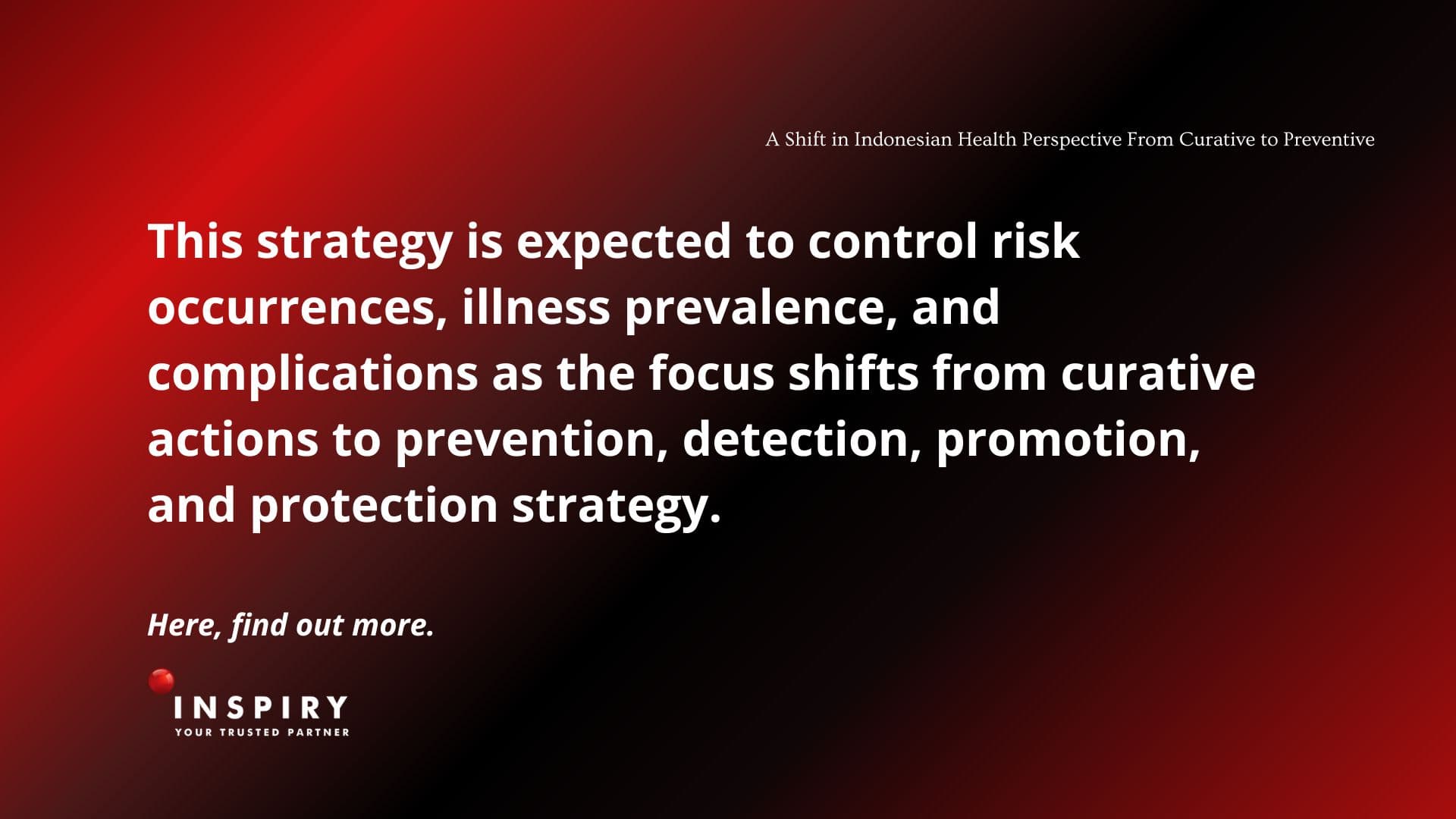
Blog Detail
A Shift in Indonesian Health Perspective From Curative to Preventive

Indonesia is one of the countries that suffers greatly due to COVID-19. On January 26, 2021, Indonesia reached the million-person threshold. Around 30,000 confirmed daily cases and increased between 30,000 and 40,000 confirmed cases. On July 15th, 56,757 new confirmed cases, the highest number ever, were recorded. It continuously increased until more than 3.4 million confirmed cases and more than 500,000 active cases as of August 1st, 2021(1). Since then, people's awareness regarding individual well-being or health has substantially increased.
Not just health, but the socioeconomics of a state is also affected by this pandemic, including the unemployment rate, poverty, and bankruptcy. This fact drives governments, healthcare organizations, and individuals to carry forward the lessons learned from this experience to build more resilient and prepared health systems for the future. Afterward, the National Health System's Disease Prevention and Control prioritizes preventive and promotional activities implementation. This strategy is expected to control risk occurrences, illness prevalence, and complications as the focus shifts from curative actions to prevention, detection, response, promotion, and protection strategy.
Preventive actions target specific risk factors to control diseases or injuries. There are three levels which are Primary, Secondary, and Tertiary Prevention. Primary prevention focuses on preventing diseases before they occur, promoting healthy behaviors, and reducing exposure to risk factors. Secondary prevention detects and treats diseases early, such as screenings and early interventions. Tertiary prevention focuses on minimizing the impact of existing diseases or disabilities, such as rehabilitation programs and support services. Besides that, promotive actions aim to promote overall health and well-being, even without specific diseases or conditions. They focus on strengthening protective factors and empowering individuals and communities to take control of their health, such as health education, healthy lifestyles, community engagement, workplace health programs, and creating supportive environments that promote active transportation and recreational areas. Preventive and promotive actions may also lessen the risk factors for noncommunicable diseases (NCDs), including tobacco use, physical inactivity, unhealthy diet, and alcohol use. NCDs are the world's largest killers, with 41 million deaths annually. Indonesia has a high mortality rate due to hypertension and cardiovascular diseases which are the common death causes in most developing countries.
Highly prevalent and communicable diseases have been the other main concern of the government. According to WHO estimates, Indonesia is the nation with the second-highest TB burden. In 2021, the incidence of Tuberculosis (TBC) will be 354 per 100,000 people, TB among HIV+ will be 8 per 100,000 people, DR-TB will be 10 per 100,000 people, TB mortality will be 52 per 100,000 people, and TB among HIV+ will be 2 per 100,000 people. This made TBC one of the priorities of Strategic Health Planning until 2024. The promotive and preventive strategies include housing repairs, BCG immunization, monitoring growth and development, screening of at-risk groups, and health education and literacy with the PIS-PK, UKBM, and SPM approach with attention to Case, Contact, Carrier-Comorbid, and Community Engagement. This is also applicable to other communicable diseases such as Malaria. In the end, Preventive and promotive actions in public health promote health, well-being, and reduced healthcare costs, resulting in healthier populations and improved quality of life.
The shift from Curative to Preventive acts has influenced medical devices and In vitro diagnostic expenditure, as it has increased over the last three years. At a CAGR of 10.6% from 2022 to 2029, Indonesia's In Vitro Diagnostics Market is anticipated to reach $1.11 billion. The increased incidence of infectious and chronic diseases, as well as growing public awareness of the value of early disease diagnosis, are driving this market's expansion. This large market size attracts many global companies to start their investment in Indonesia (2). It can be seen by the transaction recorded by the e-katalog system, which showed 70% of the transaction is for medical devices.
Although the percentage of imported medical devices is high, governments, educational institutions, and research facilities have tried to collaborate and enhance their capability in producing localized medical devices and diagnostic kits. The local product utilization in public hospitals and other facilities is steadily increased by the regulations that fully support localized product consumption. To optimize these strategies, foreign investors are very welcome, in the hope there will be transfer technology to Indonesia. Further information is here.
Contributor: apt. Syifa Amirta Sani
